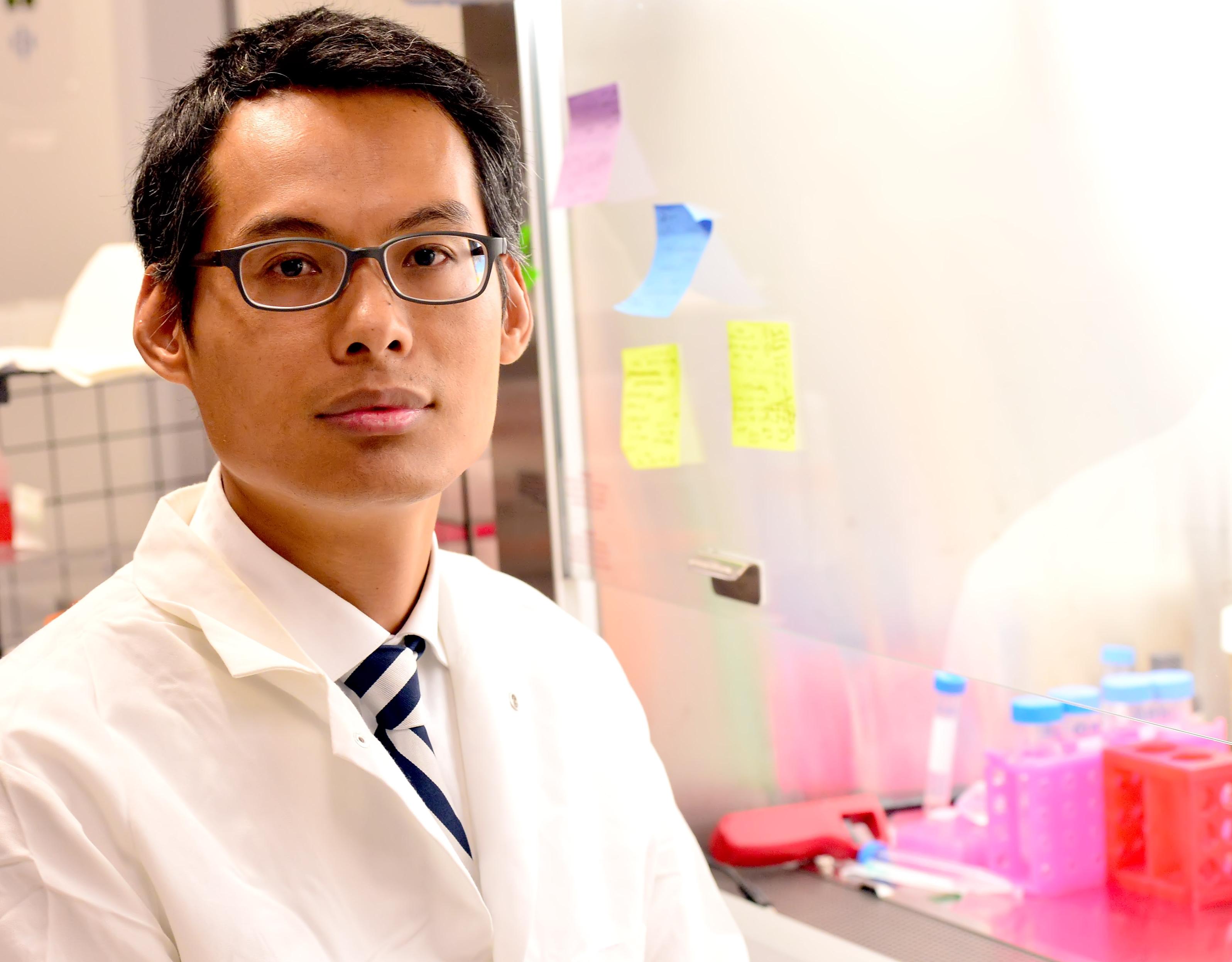Grant to MIIR Will Support Commercialization of Technology to Repair Skin Injuries
 The Chemical Alliance Zone’s Chemicals and Materials Commercialization Fund has awarded $20,000 to a Marshall University scientist to help bring to market a technology he has developed for repairing skin injuries.
The Chemical Alliance Zone’s Chemicals and Materials Commercialization Fund has awarded $20,000 to a Marshall University scientist to help bring to market a technology he has developed for repairing skin injuries.
The award to Dr. Jingwei Xie of the Marshall Institute for Interdisciplinary Research (MIIR) will help Xie’s research team produce device prototypes and samples, market to potential customers and conduct patent analysis.
Dr. Kevin DiGregorio, executive director of the Chemical Alliance Zone, said,
“We are pleased to present these funds to Dr. Xie and hope this award will play at least a small part in the commercialization success of this exciting technology. In addition to the purposes for which the funds will be directly used, this grant can act as seed money to attract attention and potential investors to his work.”
Research in Xie’s lab involves using one of science’s fasting-growing fields to develop products that can be used to improve treatment of burns and other skin wounds. He and his colleagues at MIIR are using nanotechnology to create scaffolds made of tiny fibers, invisible to the human eye, to be used as skin grafts.
According to Xie, their devices also can be used to deliver medications topically for chemotherapy, anti-infection or pain relief purposes.
He added, “The treatment of large-area, full-thickness burns still constitutes a major surgical repair challenge. The current clinical ‘gold standard’ for burn wound treatment and repair is to use the patients’ own skin as skin grafts to close the wounded area. This method can have a number of drawbacks, including the limited supply of available donor sites on a badly burned patient, heavy scarring and poor functional recovery.
“Our product shows great promise for addressing all these shortcomings and improving the healing of these types of wounds.”
DiGregorio said the CAM Commercialization Fund assists researchers, entrepreneurs, startup companies and small-to-medium firms with the commercialization of technology and products related to the chemicals and materials sectors in West Virginia. Funds are provided through a grant to TechConnect West Virginia from the Claude Worthington Benedum Foundation. The Chemical Alliance Zone administers the program with the assistance of an advisory group made up of representatives from the INNOVA Commercialization Group, Mountaineer Capital, the West Virginia Angel Network and the West Virginia Jobs Investment Trust.
Xie said the grant is special because it is intended specifically for commercialization activities.
“This is exciting for us because we can use these funds to get our product closer to the market and potential customers,” he added. “There are many grant programs out there to support research itself, but there is not as much funding available for these purposes. Having an actual product to show people will be invaluable as we continue toward our goal of starting up a company and commercializing our products.”
Anne Barth, executive director of TechConnect West Virginia, said, “Through a generous grant from the Benedum Foundation, we were able to provide funding to create the CAM Commercialization Fund to assist West Virginia entrepreneurs. The research under way by Dr. Xie, with its potential as a new product headed for market, is exactly the kind of activity the fund is intended to support.”
Xie joined MIIR in January 2011. With more than 10 years research experience in regenerative medicine, tissue engineering, biomaterials, nanotechnology and micro-/nanofabrication, he has developed a number of projects related to biomedical applications, including neural tissue engineering, tendon-to-bone insertion site repair and drug delivery. He and the other scientists at MIIR are developing a focused program of biotechnology research dedicated to producing patentable scientific breakthroughs and creating new businesses based on those discoveries. In keeping with the institute’s goal to be self-sustaining, Xie is funded entirely through external sources. He is the co-inventor on five patents and has co-authored more than 40 peer-reviewed journal articles.
In addition to the project on skin wounds, Xie’s team is working to improve surgical repair of rotator cuff injuries by constructing a biomedical device that will better mimic an uninjured tendon-to-bone attachment and ultimately result in improved healing.
For more information about Xie’s research or MIIR, which was created in 2008 through the state’s “Bucks for Brains” West Virginia Research Trust Fund, visit www.marshall.edu/miir.
For more information about the CAM Commercialization Fund, contact DiGregorio at (304) 437-4295.

